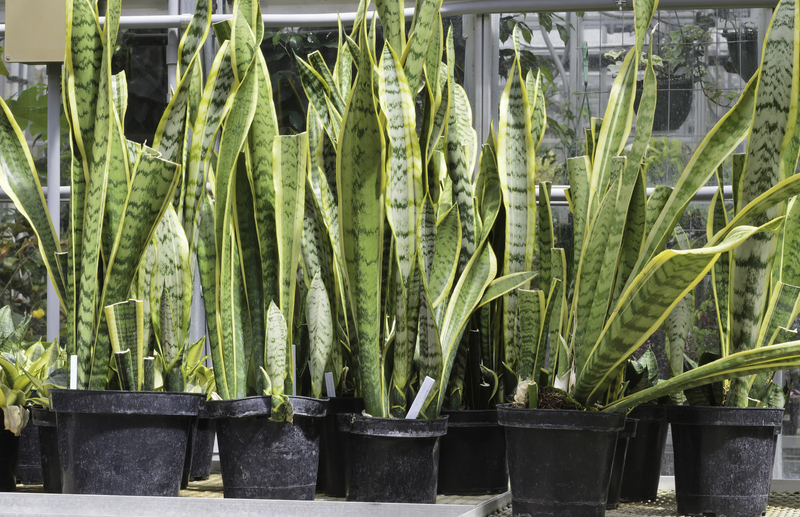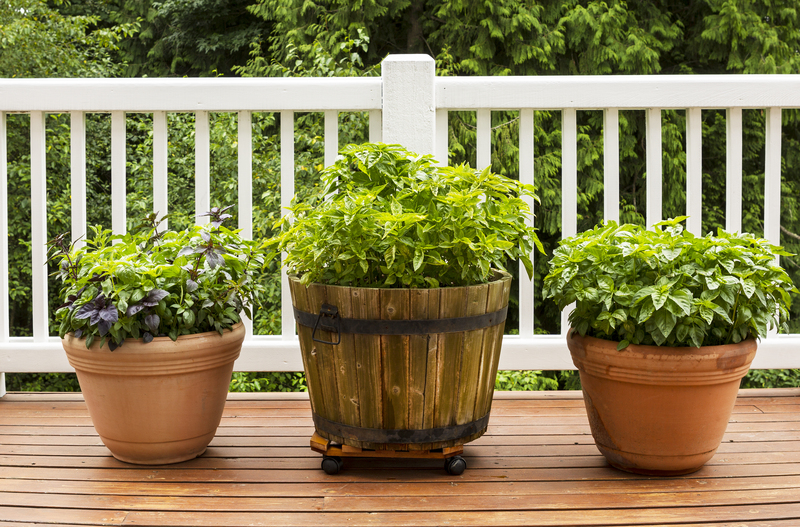Planting Seeds of Hope: How Gardens Can Influence Climate
Posted on 25/06/2025
Planting Seeds of Hope: How Gardens Can Influence Climate
Gardening is often celebrated for its ability to bring beauty and tranquility into our lives. Yet, beyond mere aesthetics, cultivating a garden can be a powerful strategy in the global effort to combat climate change. Whether you're tending flowers on a small balcony or nurturing vegetables in a sprawling backyard, every garden is capable of sowing seeds of hope for the environment. Explore how your green space can become a key player in influencing climate stability and creating a sustainable future.
Understanding the Link: Gardens and Global Climate
The concept of climate gardens or ecosystem gardens has rapidly gained traction in environmental conversations. Why? Because gardens, regardless of size, have the intrinsic ability to affect atmospheric carbon dioxide levels, urban temperatures, biodiversity, water cycles, and even local weather patterns.
Gardens as Carbon Sinks
One of the most significant ways gardening impacts the environment is through carbon sequestration. Plants naturally absorb carbon dioxide (CO2) during photosynthesis and store carbon in their tissue and roots.
- Trees and shrubs capture and store more carbon than annual plants, making them valuable allies in climate gardening.
- Healthy soils, rich in organic matter, also act as carbon sinks, locking away CO2 for years.
By cultivating gardens that prioritize perennial plants, composting, and soil health, gardeners worldwide contribute directly to climate change mitigation.
Alleviating Urban Heat Through Garden Design
Urban areas experience the notorious "urban heat island effect" due to concrete and asphalt's heat-absorbing properties. Gardens, with their shade-providing plants, cool the local environment via evapotranspiration and reduced heat absorption.
- Strategically placed trees and hedges can lower surrounding air temperatures by several degrees.
- Green roofs and wall gardens act as natural air conditioners for city buildings.

Biodiversity: A Garden's Gift to the Climate
Biodiverse gardens not only please the eye but are also essential in fostering ecosystem resilience. A melange of native plants sustains pollinators and beneficial insects, which, in turn, improve ecosystem services like pest control and soil health.
Why Does Biodiversity Matter for Climate?
- Pollinator gardens: Support bees, butterflies, and birds vital for global food security and plant reproduction.
- Wildlife habitats: Provide refuge for small mammals and reptiles, balancing ecological webs.
- Increased ecosystem stability: Diverse gene pools help species adapt to changing climate conditions.
By planting a variety of native, drought-tolerant, and flowering plants, gardeners boost both biodiversity and climate resilience.
Soil Health: The Foundation of Climate-Positive Gardens
Healthy soil is the unsung hero in the climate discussion. Not only does it anchor plants and store water, but it also houses an intricate web of microbes vital for nutrient cycling and carbon storage.
Best Practices for Soil Stewardship
- Composting: Turns kitchen scraps and garden waste into nutrient-dense organic matter, enriching soil and reducing landfill methane emissions.
- Minimal Tillage: Avoiding aggressive digging preserves soil structure, reduces carbon release, and encourages microbial life.
- Cover Cropping: Planting ground covers in off-seasons prevents soil erosion and further locks in carbon.
Every effort to nurture soil health in your gardens strengthens its role in climate change prevention.
Water Management and Climate Gardening
Water is at the heart of resilient gardens and climate adaptation. With the growing unpredictability of rainfall and extended droughts, garden water management becomes crucial.
Sustainable Watering Techniques
- Rainwater Harvesting: Collecting and using rainwater for irrigation limits dependency on municipal water and relieves local water stress.
- Drip Irrigation: Delivers water directly to plant roots, drastically reducing waste through evaporation or runoff.
- Mulching: Spreads organic materials on topsoil to retain moisture, limit weed growth, and improve soil structure.
Gardeners who adopt eco-friendly watering practices play a key role in adapting their local climate to unpredictable weather events.
The Role of Urban and Community Gardens
Urban green spaces bridge the gap between city living and nature sustainability. Community gardens, rooftop gardens, and vertical gardens are more than trends--they are necessary solutions.
Community Gardens and Local Climate Action
- Reduce food miles by supplying fresh produce locally, minimizing carbon footprints from transportation.
- Build community resilience by encouraging local participation, education, and climate awareness.
- Enhance urban biodiversity by transforming concrete spaces into natural habitats.
The collective power of community gardens inspires hope and marks a significant shift in grassroots climate action.
How to Create Your Own Climate-Resilient Garden
Ready to plant seeds of hope and turn your garden into a force for positive climate influence? Here's a step-by-step guide to designing and maintaining a garden with sustainability at its core.
Step 1: Assess Your Space and Climate
- Observe sun patterns, wind exposure, and drainage.
- Identify your USDA Plant Hardiness Zone for appropriate plant choices.
Step 2: Choose Climate-Positive Plants
- Prioritize native species, which are well-adapted to local weather and support wildlife.
- Incorporate trees and shrubs for lasting carbon storage.
- Mix perennials with annual crops for year-round habitat and sequestration.
Step 3: Improve Soil Health
- Regularly add compost and mulch to boost soil fertility.
- Practice no-dig gardening to protect beneficial fungi and microbe life.
Step 4: Water Wisely
- Install a rain barrel system.
- Use mulch and ground covers to keep soil moist naturally.
- Choose drought-tolerant varieties where water is scarce.
Step 5: Foster Diversity
- Grow a variety of flowering plants to support birds, bees, and butterflies.
- Create layered plant structures--trees, shrubs, flowers, and ground covers--for multiple habitats.
Success Stories: Gardens Changing the Climate Game
Around the world, inspiring examples show how planting seeds of hope truly pays dividends for the climate.
Hedgerow Revival in England
Farmers and communities have restored miles of native hedgerows, sequestering carbon, supporting insects, and cooling the countryside.
Urban Rooftop Gardens in Singapore
Singapore's extensive green roof initiative keeps city temperatures lower and air purer while providing food and habitat for wildlife.
Rain Gardens Across the United States
Hundreds of urban communities are employing rain gardens--planted depressions that absorb and filter stormwater--to combat flooding and restore groundwater levels.
Challenges on the Horizon for Climate Gardening
While the benefits of gardening for the climate are immense, gardeners must navigate several obstacles.
- Pest and disease pressures: Shifting climates can bring new pests. Solution: Diversify plantings and adopt integrated pest management.
- Extreme weather events: Drought, floods, and storms demand adaptive techniques such as strategic planting and flexible water management.
- Urbanization: Limited land and soil contamination require creative solutions like container, rooftop, and vertical gardening.

The Future of Climate-Smart Gardening
What does the future hold for gardens and our climate? Scientists, policymakers, and home gardeners alike are joining forces to advance regenerative gardening practices. The hope is to transform every patch of green into an eco-friendly powerhouse--low-maintenance, biodiverse and capable of sequestering carbon year-round.
- Urban agriculture policies are expanding in cities worldwide to integrate more green spaces.
- Educational programs are teaching youths and adults about the connection between gardening and climate action.
- Innovative technologies are emerging, from precision irrigation to climate-resilient seeds.
Ways You Can Make a Difference--Today
- Start small: Even a potted herb garden supports pollinators and adds greenery to the urban environment.
- Join local gardening groups or community gardens to learn and share resources.
- Advocate for local policies that protect green spaces in your neighborhood.
- Share your gardening journey online via social media, inspiring others to take up climate gardening.
Conclusion: Every Seed Counts in Shaping Climate Hope
Gardens are more than private sanctuaries--they are vital tools for environmental renewal and hope. Each trowel of soil turned, every native plant sown, and all the compost you spread ripple outward to support the Earth's fragile climate balance. By planting seeds of hope and embracing climate gardening practices, you join countless others in cultivating a legacy of resilience for generations to come.
Why wait? Get your hands dirty, nurture the earth, and be part of a greener, cooler, and more hopeful planet. Your garden is the change you wish to see in the world.


